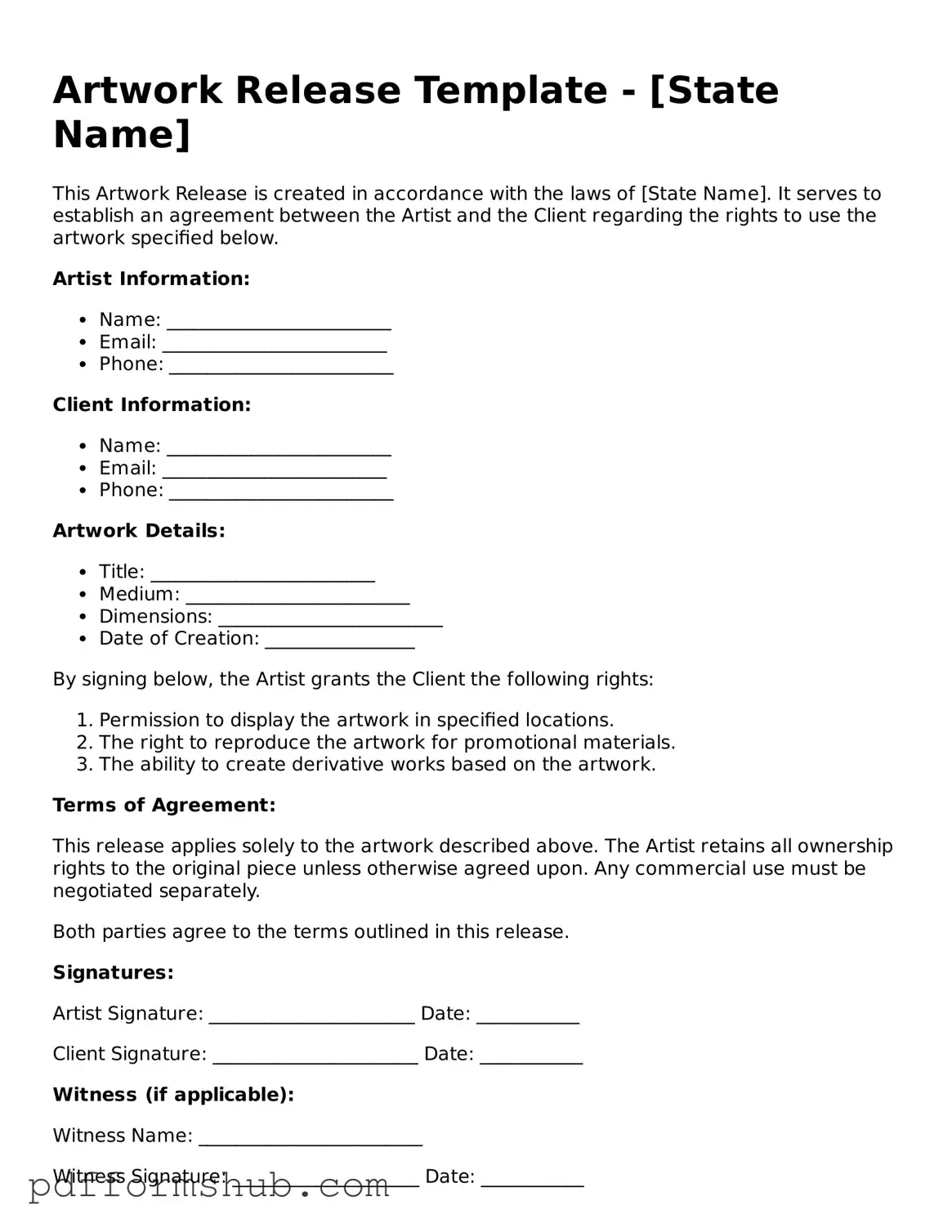Valid Artwork Release Form
An Artwork Release form is a legal document that grants permission to use an artist's work for specific purposes. This form protects both the artist's rights and the interests of those who wish to use the artwork. Understanding its importance can help ensure that all parties are on the same page regarding usage and compensation.
Ready to secure your rights or use an artwork? Fill out the form by clicking the button below.
Customize Form
